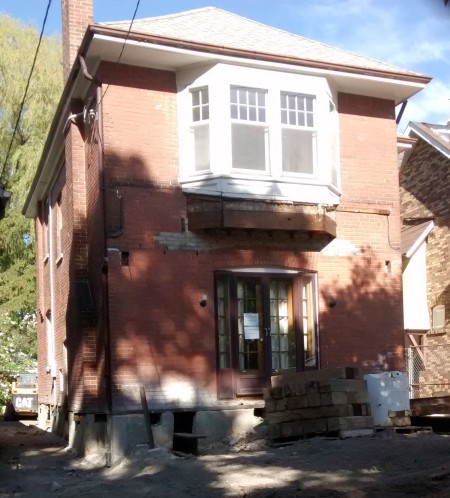Building Science Corp has done a great job describing the phenomenon of water being drawn up the foundation and up and into the above grade wall portion of vintage solid masonry homes in an article called Small Sacrifices. The first course of brick on the foundation usually look a little haggard after a 100 years.
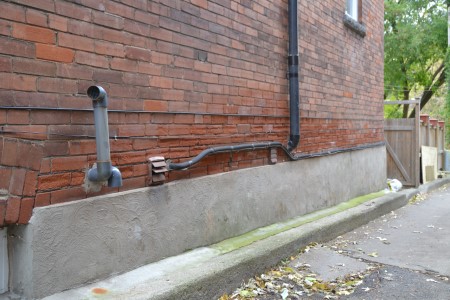
Photo 1: Typical Toronto double brick: The couloured brick above the foundation wall often spalls at this joint because it gets water from above (if rain pushes through missing mortar) and from below with the foundation wall itself pulling water from the soil or puddling against the foundation.
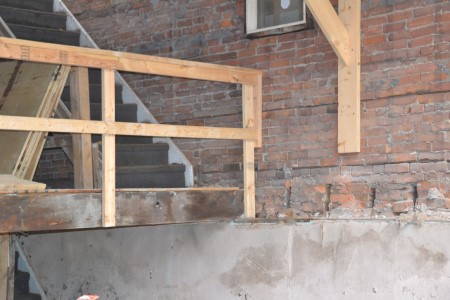
Photo 2: This picture of a house being gutted corresponds to the image above but on the inside. This is what the partywall (shared or warm) wall looks like with wood floor joists “embedded” into the wall.
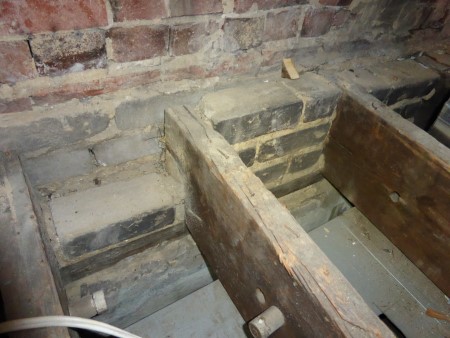
Photo 3; Variation on photo 2 above, this shows the floor joist resting on a wood mud-sill with a layer of brick between. Technically, these joists on the outside wall are not embedded into the brick wall. The wood sill is extremely vulnerable to rotting if it stays cold and damp for too long.
In another one of Lstiburek’s articles called Rubble Foundations Dr Joe can be seen lifting the house with a number of bottle nose jacks in order to get in a capillary break (thin blue line below) that does double duty; stops rising damp and if rain water comes from above it can get drained out instead of sitting on foundation wall top.
I happened to run by a project in my neighbourhood the other day that was listing heavily to one side, sure enough, holes were cut in the foundation and large beams slid in. Within 2 weeks the house was 2′ up on timber cribbing!
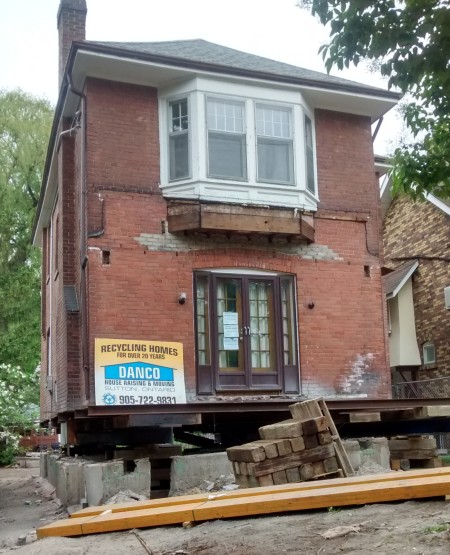
Photo 5: With the house raised 2′ held up by timber cribbing, the 100 year old foundation can now be replaced. Let’s hope they cover the new foundation wall top with a capillary break to stop the rising damp.


